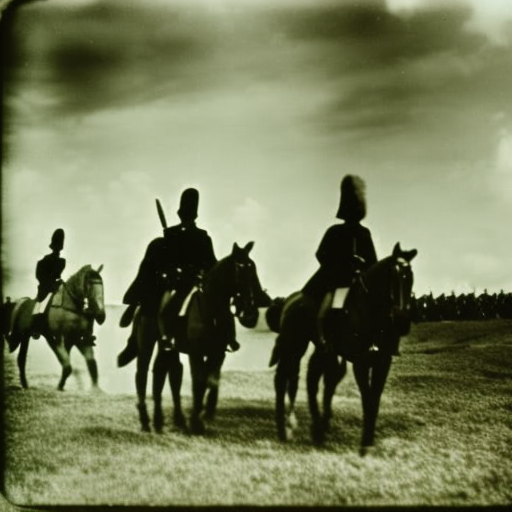The Battle of Waterloo (1815)
The Battle of Waterloo, fought on June 18, 1815, was a significant event in European history. It marked the final defeat of Napoleon Bonaparte, the French emperor, and the end of his reign. The battle took place near the town of Waterloo in present-day Belgium and involved the forces of Napoleon’s French Empire against a coalition of British, Dutch, and Prussian troops.
Background:
After escaping from exile on the island of Elba in 1815, Napoleon returned to France and quickly regained power. His return to the throne sparked fear among European powers, who formed a coalition against him. The coalition consisted of the United Kingdom, Prussia, Russia, and Austria. The British army, under the command of the Duke of Wellington, joined forces with the Prussian army, led by Field Marshal Gebhard Leberecht von Blücher.
The Battle:
The battle began in the morning of June 18, 1815, when Napoleon launched an attack on the Anglo-Allied forces commanded by Wellington. The French army initially gained ground, but the British and Dutch troops held their positions. The battle turned in favor of the coalition when the Prussian army arrived to support Wellington’s forces in the afternoon.
The Role of Wellington:
The Duke of Wellington played a crucial role in the Battle of Waterloo. He strategically positioned his troops on the high ground, which gave them an advantage over the French forces. Wellington’s defensive tactics and the discipline of his troops proved instrumental in withstanding Napoleon’s attacks. Despite heavy casualties, Wellington’s army held their ground until the arrival of the Prussian reinforcements.
The Prussian Intervention:
The Prussian army, led by Field Marshal Blücher, played a decisive role in the battle. After a long and arduous march, the Prussians arrived on the battlefield in the late afternoon. Their arrival surprised the French, who were already engaged with Wellington’s forces. The Prussians attacked the French flank, causing significant disruption to Napoleon’s troops. This unexpected assault turned the tide of the battle in favor of the coalition.
The Final Defeat of Napoleon:
As the battle progressed, it became clear that Napoleon’s forces were being overwhelmed. The combined strength of the British, Dutch, and Prussian armies proved too much for the French. Napoleon’s attempts to rally his troops and launch counterattacks were unsuccessful. By late evening, the French army was in disarray, and Napoleon was forced to retreat from the battlefield.
Aftermath:
The Battle of Waterloo marked the end of Napoleon’s reign and his ambitions for European dominance. He was subsequently exiled to the island of Saint Helena, where he died in 1821. The battle also had far-reaching consequences for Europe. It led to the restoration of the Bourbon monarchy in France and the establishment of a new balance of power among European nations.
In conclusion, the Battle of Waterloo was a decisive event in European history. It marked the final defeat of Napoleon Bonaparte and the end of his reign. The strategic brilliance of the Duke of Wellington, combined with the timely arrival of the Prussian army, ensured victory for the coalition forces. The battle had significant implications for the future of Europe, leading to political and territorial changes that shaped the continent for years to come.












